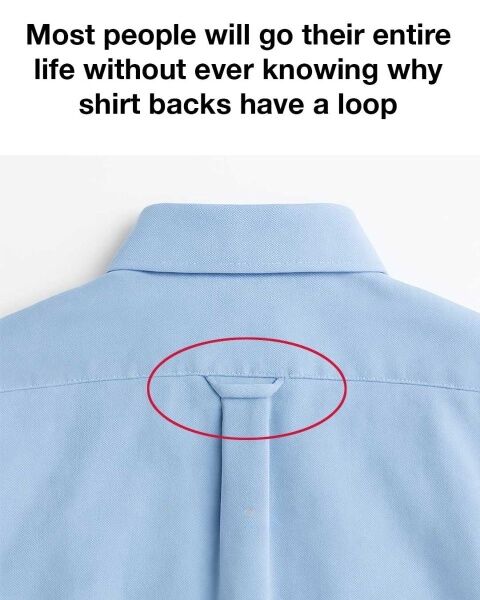The Hidden Story Behind the Shirt Back Loop: Its Origins, Evolution, and Lasting Impact

In the world of fashion, small details often go unnoticed by the average person. One such detail is the small loop found on the back of many dress shirts and casual button-downs. Most people might wear these shirts for years without ever wondering about the purpose of this tiny feature. However, the shirt back loop — also known as the “locker loop” — has a rich history and significance that deserves attention. Let’s explore its origins, evolution, and why it continues to be part of modern apparel today.
Historical Origins: The Birth of the Locker Loop
The shirt back loop first appeared in the 1960s, popularized by the American brand GANT. It was originally designed for Ivy League college students who needed an easy way to hang their shirts in gym lockers without wrinkling them. Hence, the term “locker loop” was born. This simple, practical innovation quickly became associated with collegiate style and added a blend of functionality and subtle flair to men’s fashion.
The Evolution of Shirt Design
Over time, the way we design and wear shirts has evolved dramatically — from materials and cuts to added features. The locker loop is a prime example of how a practical idea transformed into a permanent element of style. Though originally functional, it now also serves symbolic and aesthetic purposes, reflecting the broader trend of blending fashion with practicality.
Why Shirt Back Loops Still Exist Today
Despite advances in fabric care and wardrobe design, the shirt back loop remains for several key reasons:
1. Convenience for Hanging Shirts
The original function still holds true: the loop provides a quick, convenient way to hang shirts in lockers or on hooks, keeping them wrinkle-free without the need for a hanger — ideal for small spaces and active lifestyles.
2. A Subtle Fashion Statement
Over time, the loop has become a quiet symbol of classic, preppy style. Rooted in Ivy League traditions, it adds a subtle design detail that enhances the back of the shirt, often offering a contrast in fabric or stitching for added visual interest.
3. Practical Drying Solution
The loop is also practical for air drying shirts after washing. Hanging a shirt by the loop prevents stretching at the shoulders and preserves the garment’s original shape and fit better than using a hanger.
4. A Nod to Vintage Fashion
As vintage and retro styles continue to make comebacks, the shirt back loop serves as a charming reminder of traditional, old-school shirtmaking practices. It connects today’s wearers with the style heritage of past generations.
5. An Indicator of Craftsmanship
In premium shirt brands, a back loop can signal attention to detail and high-quality construction. It suggests that the maker considered both functionality and aesthetics, appealing to consumers who value careful craftsmanship.
Cultural Meanings of the Shirt Back Loop
Beyond fashion and functionality, the locker loop has developed cultural meanings. In some college communities, cutting off the loop symbolized that a man was “taken” and no longer single. This playful tradition adds a surprising layer of social and emotional significance to an otherwise simple design feature.
Modern Interpretations
Today’s designers continue to reimagine the shirt back loop. Some use it purely for decoration, while others place it in unconventional spots or integrate it with branding elements. Its enduring adaptability proves that even the smallest design details can evolve while staying rooted in tradition.
Conclusion: A Small Loop with a Big Story
Though it may seem minor, the shirt back loop is a fascinating example of how function, fashion, and culture intersect. What started as a simple locker room convenience has grown into a timeless symbol of practicality, style, and even emotional connection. For those who take a closer look, it offers a glimpse into the rich heritage and thoughtful design that define the clothes we wear every day.